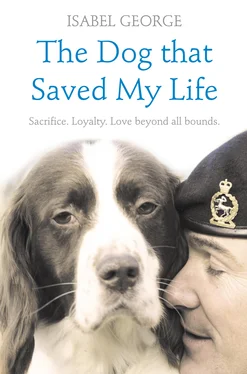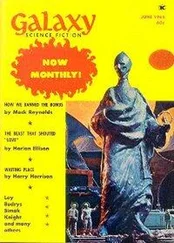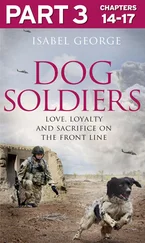For a while life in the barracks was calm and slightly unreal but by mid November (19 November according to a veteran’s account) news reached the Hong Kong garrison that the Japanese Army was only 23 miles away. In October the Japanese had moved over 20,000 troops in Southern China and a rumour that the Imperial Army was about to move several thousand more troops was sounding more like fact than mere scaremongering.
On Sunday 7 December 1941, the Japanese finally showed the world their military might with a surprise attack on Pearl Harbor, the Hawaiian port that was the headquarters of the US Pacific Fleet. In one morning 353 Japanese navy aircraft from six aircraft carriers sank or damaged many US warships, destroyed 188 aircraft on the ground and killed over 2,000 US service personnel and civilians. The attack brought the Americans into the Second World War, and the war in the East was on with a vengeance.
At first light the following day, the Japanese Army set its sights on Hong Kong. Gander’s war had begun.
General Maltby, Commander of the British Garrison in Hong Kong, who was now fully convinced of the Japanese intent to invade Hong Kong, gave the order to activate the garrison. Maltby had always feared that the Japanese would launch a seaborne attack, which explained the concentration of defences on the south of the island. The north side, facing the mainland, was less well fortified; this area included the Lye Mun Gap, which at its narrowest point was only 450 yards across. In an attempt to cover as much ground as possible the general decided to split his defences. West Brigade, comprising the Winnipeg Grenadiers, was commanded by Brigadier Lawson. Gander and the rest of ‘C’ Force formed part of East Brigade, under Brigadier Wallis. They were to be stationed in the Lye Mun region, with three company platoons and four reinforcement platoons. Scattered amongst them were small detachments of the Scots Guards, the Middlesex Regiment, the Hong Kong Defence Corps, and the Rajputs and Punjabis of the Indian Army.
After news broke of the attack on Pearl Harbor the men had been confined to barracks. As a result of a breakdown in communications, Gander and the men had no idea that the battle for Hong Kong had begun just hours after the Japanese attack. The first the British heard of it was when an Intelligence Officer assigned to monitoring the Japanese broadcasts picked up the following message at 4.45 a.m on 8 December 1941:
The Army and Navy division of Imperial Headquarters jointly announced at six o’clock this morning (Tokyo time), December 8, that the Imperial Army and Navy forces have begun hostilities against the American and British Forces in the Pacific at dawn today.
Within hours of receiving Maltby’s orders to leave the mainland, every kitbag was packed and ammunition was being loaded onto the ferry that would take them from Kowloon to Hong Kong Island. It was the first clue the men received to there being a declaration of war. The second clue was the appearance of Japanese bombers overhead and the howl of the air-raid siren over Kowloon. Then the bombing began.
The wind and rain lashed down as the soldiers landed on the island, laden with kitbags, ammunition, supplies and a very wet Newfoundland dog. ‘Come on buddy, not far to go now and we’ll be home and dry,’ said Fred Kelly, as he gently persuaded Gander to keep up with the rest of the Royal Rifles who were hurrying to take up their positions across 15 miles of the eastern part of the island.
Safely ashore, Gander stayed close to Fred. His dense coat hung heavy with rainwater and it slowed his pace as he clambered to keep up with his fellow soldiers. Fred was concerned that the dog might catch a chill and so he promised Gander a drying down when they reached their camp. Makeshift camps were being set up, and men and ammunition moved into position. There were not enough tents for every man there but the men were tired enough to sleep anywhere as the rumble of artillery continued throughout the night.
The assortment of coastal guns, manned pillboxes, minefields and barbed-wire fences that encircled the island came immediately under attack. The Royal Navy presence consisted of one destroyer, and the Royal Air Force retained a maximum of three torpedo bombers at Kai Tek Airport. On the morning of 8 December Japanese fighter aircraft destroyed the airport in one single attack. On their second run, the Japanese planes dropped leaflets demanding the surrender of Hong Kong. The British refused.
As the sirens wailed relentlessly and the sky filled with the darting shadows of fighter planes, the soldiers hurried to stock the wooden pillboxes that were strategically placed in a line of defence that was to protect against any landing from the sea. It was a race against time to get men and guns into place before the invaders made it ashore. It was a difficult time for Gander, who wanted to be at Fred Kelly’s side every second but had to content himself with spending his time confined to the makeshift barracks. But like any other good soldier, he took his turn on watch at night.
Shells exploded all around and the sky flashed burnt orange. Huge sheets of flame carved into the inky sky as the men worked frantically to move the boxes of ammunition that still lay where the ferry had landed. With nowhere to store these vital supplies out of the driving rain, cover had to be found urgently. The pillboxes were already packed with crates of equipment but still more had to be crammed into the tiny space available. Fred decided that a pillbox was the best place for Gander while all the work was going on. Although he wasn’t upset by the steady shelling that became a constant background noise, Gander liked to be so close to Fred that he was in danger of getting in the way. He didn’t whine or whimper or cause his friends a problem, he just liked to be close to them. The thud of the shelling continued into the night. Exhausted and desperate for rest, the men found a space to sleep not knowing if sleep was possible.
Gander was happy to have the men around him. Fred was convinced that the dog sensed the stress of the situation and was always very good at choosing the man who looked the most tired and anxious to get his full attention. Laying his head on the man’s lap, Gander heaped his full weight on too. No one wanted to move him. Wherever the dog lay, he brought a special peace and to the ‘chosen’ person he brought a tranquillity that was unknown in that place at that time. The dog was the perfect partner. Man’s best friend. The one individual who could bring a kind of peace where peace seemed impossible.
Over the next five days the Japanese superiority in the air gave their infantry an advantage on the ground. Marching into the New Territories without opposition, a wave of khaki started to wash over the mainland. The Punjabis attempted to stem the advance by demolishing bridges and destroying road and rail links but it did not slow the enemy taking ground. By 10 December the Japanese had swarmed into and over the populated mainland city and were ready to make an approach on the island.
By the morning of 13 December, all British, Canadian and other forces that had remained on the mainland had been evacuated to Hong Kong Island as the Japanese invasion proceeded at pace. The total defence force of over 14,500 men was now on the island. Seeing this action as a retreat, the Japanese were quick to make another demand for surrender. The British governor, Sir Mark Young, refused. Determined to smash the desperate Allied defence, the Imperial Army intensified the shelling from the mainland, taking out ammunition dumps and supply depots, and wreaking havoc on the communication lines.
Wave after wave of shelling and artillery battered the island’s coastal defences. The roadside pillboxes, so easy to pinpoint from the air, were systematically shelled all along the north shore, which made the line of defence strain under the attack. The Japanese advance seemed unstoppable. The area around the Lye Mun Gap, where Gander and the rest of ‘C’ Force were positioned, was now coming under threat. Between 10 December and the 17th, the units sustained heavy casualties, but still the British refused to surrender to the Japanese invaders. A message was sent to them:
Читать дальше












